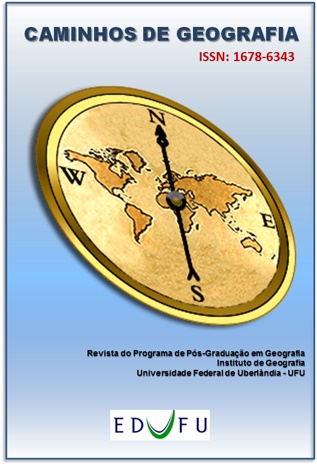ECOTONE SOILS IN NORTHEASTERN BRAZIL
DOI:
https://doi.org/10.14393/RCG228155391Keywords:
Caatinga, Semideciduous forest, Dry forest, Water storageAbstract
Texture, base saturation, organic carbon content, and water storage availability of soil are drivers of plant physiognomy and composition of communities. Soil properties in ecotone areas are still poorly studied, and the transition between dry, moist, and semideciduous forests is defined only by climate parameters. The objective of this study was to describe the soil properties of a moist-dry forest ecotone in Northeastern Brazil. Seven soil profiles were dug in a pristine semideciduous forest known as “Agreste”. Four more pedons were described to represent soils of dry forests. Morphology, reactivity, texture, organic matter content, and water storage capacity of the soil horizons were determined. The soils of the study area are derived from granites and granitoids, rocks highly resistant to weathering. Soils of dry forests are loam, neutral to alkaline, and hypereutrophic. Soils of semideciduous forest are sandy, acidic, dystrophic, and have up to 65% higher C content. The rocks act as impermeable layers to water, and consequently, most soils develop stagnic properties in semideciduous forests. Soils are dystrophy and have low CEC and loam texture. These properties are attributed to ferrolysis. Umbrisols and Stagnosols with higher water storage capacity than dry forests soils sustain semideciduous forests in Northeastern Brazil.
Downloads
Downloads
Published
How to Cite
Issue
Section
License
Autores que publicam nesta revista concordam com os seguintes termos: a) Autores mantém os direitos autorais e concedem à revista o direito de primeira publicação, com o trabalho licenciado sob a Creative Commons Atribuição-NãoComercial-SemDerivações 4.0 Internacional. b) Autores têm permissão e são estimulados a publicar e distribuir seu trabalho online (ex.: em repositórios institucionais ou na sua página pessoal), já que isso pode gerar alterações produtivas, bem como aumentar o impacto e a citação do trabalho publicado. c) Em virtude de aparecerem nesta revista de acesso público, os artigos são de uso gratuito, com atribuições próprias, em aplicações educacionais e não-comerciais.











